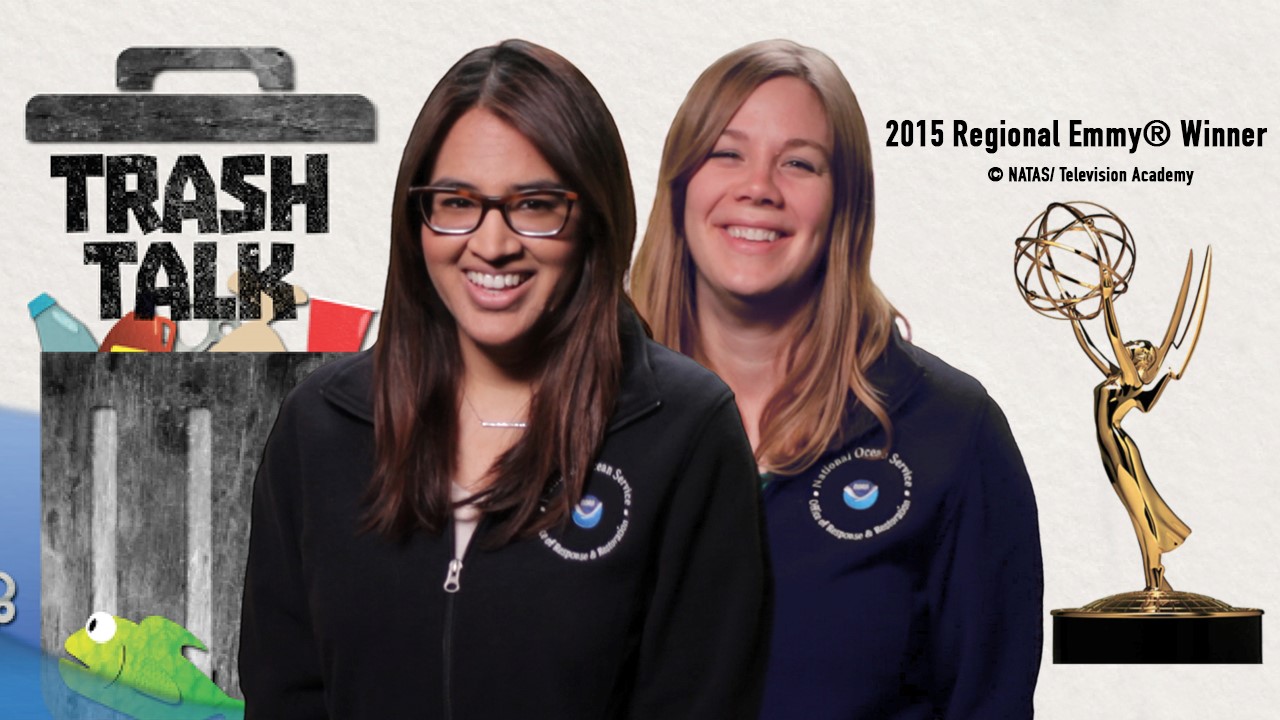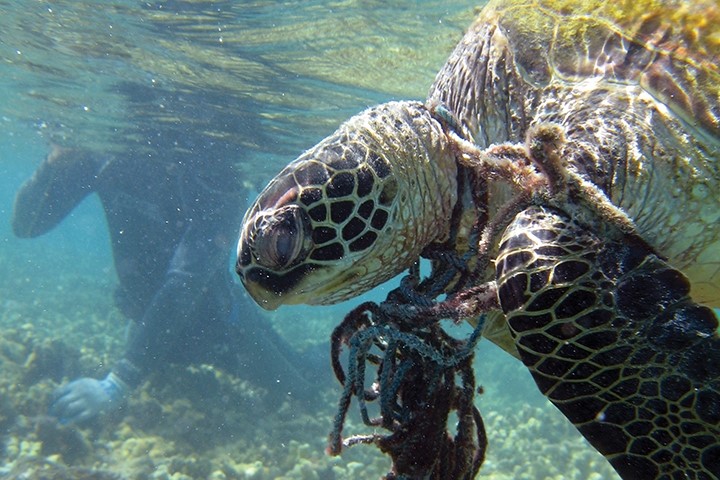

People don’t always think of “Trash Talk” as something positive. But, on June 25, a video special feature on that topic from the National Oceanic and Atmospheric Administration (NOAA) won a Regional Emmy® Award for explaining how trash hurts our ocean and how we all can help.
Marine debris comes from us, and it includes any persistent, solid material that is disposed of or abandoned into the marine environment or Great Lakes. Once discarded, trash can wash down storm drains into rivers, and eventually, the ocean. Some of the most common items found during coastal clean-ups are single-use, disposable plastics: bags, beverage bottles and bottle caps, plastic cigarette butts, straws, and drink stirrers. Though we only use them once, these plastics do not biodegrade and can linger in the ocean for centuries. Plastics not only tarnish the beauty of our coastal landscapes, but also endanger plants and animals. Plastic bags are the most common type of marine debris eaten by sea turtles, which cannot digest the plastic.
Ensuring Coastal and Ocean Resilience is a key theme under the Administration’s National Ocean Policy (NOP). One of the NOP’s actions to ensure ocean resilience is to facilitate the removal of trash and marine debris. In fact, the National Ocean Council has an entire subcommittee, the Interagency Marine Debris Coordinating Committee, to develop approaches to reduce the sources and impacts of marine debris.
The Administration has made significant progress toward preventing and reducing marine debris under the NOP:
- As part of NOAA’s Marine Debris Monitoring and Assessment Project, the Administration has published technical guidance and methods for monitoring marine debris on shorelines, surface waters, and the seafloor. NOAA’s shoreline monitoring protocols help more than 40 Federal and non-government entities track the progress of marine debris prevention activities and identify targets for future mitigation efforts.
- To empower citizens to clean up their coastlines and to prevent marine debris, the Administration has awarded more than two million dollars in Community-based Marine Debris Removal and Prevention through Education and Outreach grants in fiscal year 2015.
- The Administration has developed strategic regional planning efforts to support trash prevention and material reuse strategies.
- Going forward, the Administration is assessing how marine debris impacts peoples’ decisions to visit beaches, and is increasing public outreach and education on marine debris.

We all have the power and the responsibility to keep our ocean clean. There are many actions you can take to prevent and reduce marine debris. Dispose of waste properly--avoid littering and don’t drop trash into sewers. Reduce the amount of waste you produce and recycle as much as possible. Drink from a reusable water bottle. Check out local actions in your community, like the “Washed Ashore: Art to Save the Sea” exhibit currently on display at the Smithsonian’s National Zoo in Washington, DC. This exhibit on the impact of marine debris on sea life consists of sculptures of marine animals made from plastic trash that washed up on the Oregon coast, and shares information on what you can do to help. Every piece of debris counts, so let’s all do our part to keep the ocean free of debris.
Jennifer Lee is Deputy General Counsel and Policy Advisor for the White House Office of Science and Technology Policy.


